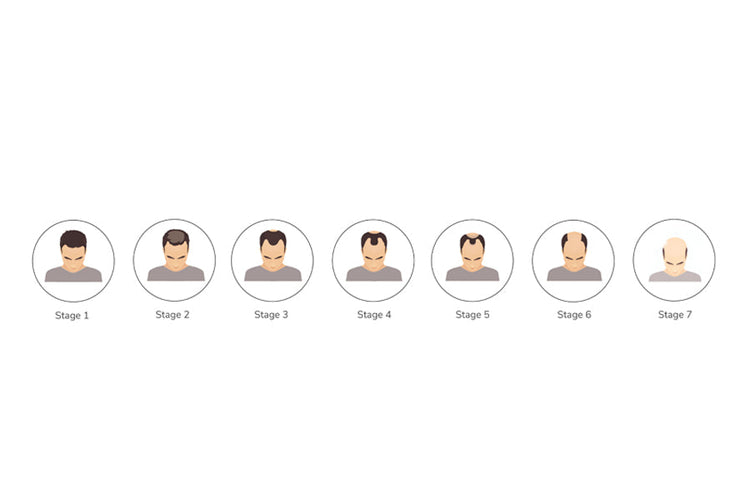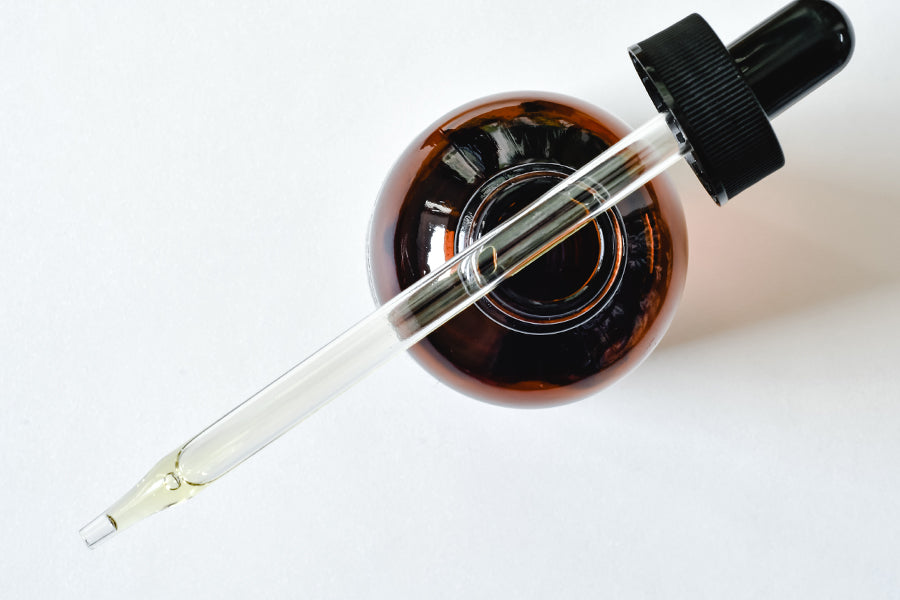Hair fall can occur due to many reasons and eventually with time can lead to pattern baldness. While you all search for ways to fix those problems, one thing you all should know is the stages of premature baldness. Baldness leads to receding hairline in men. A lot of men get affected by male pattern baldness irrespective of age, and this does not happen overnight, it is a slow and steady process. Hair Fall will start slowly and then fall out in patches generally around the crown part of your head. Due to your incapability of keeping a track of the hair fall stages, you fail to identify appropriate treatments on time. So, what can help you out with this problem? Norwood scale or Hamilton Norwood scale can be used to find out the stages of receding hairline. Numerous doctors are using the Norwood scale for diagnosing the stages of Norwood hairline or male pattern baldness and suggest treatments accordingly. There are also some scales to identify the stages of not only male pattern baldness but female pattern baldness as well. But all the other scales used somehow tend to be similar to the Norwood scale. There are seven different stages of Male pattern baldness. These show the receding hair loss stage that you might be on, or the hair loss stage.
This article will help you learn everything about the Norwood scale, its stages and how you can find out your hair loss stage using the Norwood scale. Keep reading to explore more.
What is the Norwood Scale?
Norwood Scale is a system to measure the hair loss stages. It was developed in 1950 by James Hamilton and later in the year, 1970 O’Tar Norwood has updated it, which makes it popular as Hamilton Norwood Scale. This scale shows hair loss in seven different stages. Norwood Scale helps in categorizing hair loss from slight changes in the Norwood hairline to complete baldness. By understanding the stages, it becomes easier to identify the proper treatment required for your hair to cure your hair fall woes. Now, let’s see the stages of the Norwood balding scale.
The Norwood Scale is not just a tool for diagnosis but also for tracking progress during treatment. By understanding which stage you fall under, you can set realistic expectations for regrowth timelines and monitor improvements accurately. It's also used globally by researchers studying male pattern baldness, making it a recognised standard in the medical community for evaluating hair loss severity. The Norwood scale
Stages of Norwood Scale Hair Loss
The Stages of Male pattern baldness are explained by the Norwood scale.
The more you climb on the stages, the more severe is the state of pattern baldness. Here is a detailed explanation about the seven stages of the Norwood Scale:-

Stage 1
The first stage of receding hairline means your hair fall is still under control. There are only minimal signs of hair loss from the crown part of your head and you still have lots of hair enough to cover your scalp from exposure.
Stage 2
The Norwood 2 hairline starts displaying slight recession around the temples. This stage is known as a mature hairline.
Stage 3
Signs of balding start appearing as hair starts falling out from the forehead part and takes the formation of an M-shaped, V-shaped or U-shaped hairline.
Stage 3 Vertex
This is a stage when hair starts falling from the vertex part of your hair along with the crown part which starts becoming thin.
Stage 4
In this stage, hair loss becomes very severe and the U-shaped hairline becomes more visible with almost any hair left in the crown or vertex region of your scalp. Bald spots become more prominent.
Stage 5
This stage is the progressive version of stage 4 where the hair loss is so much that hair is left only on the two sides of your head and only a small section of hair remains on the top of your scalp connecting the two sides.
Stage 6
In this stage, no hair remains in the front part of your head. There is no section of hair left anymore that separates the crown from the forehead. This is a stage where only a few hairs are left at the back end of your scalp.
Stage 7
The last stage of the Norwood scale is the most unembellished one. No hair remains except some thin strands of hair encircling the exterior part of the head or some hair taking the formation of a horseshoe pattern.
These were the stages of Male pattern baldness. It’s worth noting that progression through these stages can vary widely from person to person. Factors like stress, diet, and underlying health conditions can accelerate or slow down the journey across the scale. Early intervention at stages 1 or 2 often yields better outcomes, making timely action crucial. Moreover, each stage informs specific treatment choices, from topical solutions to advanced therapies like hair transplants. The Norwood scale helps understand the male pattern baldness stages.
How to track hair loss with Norwood Scale?
Norwood Scale is mostly used by doctors or hair transplantation surgeons. So, for proper and correct identification of tracks at which stage of hair loss you are in, it is best suggested to fix an appointment with a dermatologist. But if you would like to track hair loss according to the Norwood scale yourself, here are some quick tips for it:
-
First, see some reference photos depicting the stages of the Norwood scale. That’s how you can compare your hair with the picture and understand which stage you are currently in. You can continue following this every month to keep proper track of hair loss.
-
Another very simple step you could try is – take a picture of yourself highlighting your hairline. You can take a selfie or even a mirror selfie but make sure your hair is getting the most attention and not your face. Tilt your head accordingly where you see signs of receding hairline and click a photo. The next step Is to compare your pic with the pictures of Norwood's hairline stages. You will understand which stage you are in. To get things more accurate, keep a track of all the pictures and do not miss out to check after 15 days or once a month. If you see any significant change, understand that you are inching towards the time when your hair will require proper medication.
Consistency is key when tracking your hair loss. Use the same lighting and angles each time you take pictures to make comparisons accurate. You can also mark calendar reminders to check your scalp monthly. If you’re noticing subtle changes, consider consulting a dermatologist early — even a small shift from one stage to the next can impact the treatment plan significantly.
Treatments for Hair Loss
While medications like Minoxidil and Finasteride are commonly prescribed, combining them with lifestyle changes such as improving sleep patterns, reducing stress, and maintaining a nutrient-rich diet can amplify results. Additionally, advancements like PRP (Platelet-Rich Plasma) therapy and microneedling are gaining popularity as supportive treatments to reactivate dormant follicles and boost growth.
Minoxidil
This is a very common treatment for hair loss problems. This is also known as Rogaine and is a topical medication that is directly applied to the scalp with the help of a foam and liquid solution. This treatment thickens your hair and allows a proper supply of blood to the hair follicles enhancing the growth of your hair in the affected area.
Finasteride
This is an FDA-approved oral medication program that restricts the conversion of testosterone hormone to DHT. DHT is believed to be a cause of hair loss in men. Hence with lower levels of DHT, your hair follicles will suffer less leading to improvements in the growth of hair.
Laser Therapy
This is a therapy that uses a device emitting light. It is believed that these devices could stimulate your hair follicles that would lead to improvement in the growth of your hair.
Norwood Scale helps you best in identifying the stage of your hair loss. So, if you find even a nominal amount of hair loss, without any further delay start taking action. With Norwood Scale, find out which stage of hair loss you are in and start with your medication procedure. Early stages can be effectively treated even with home remedies or by some naturally composed products by Traya. What are you waiting for? Use the Norwood scale to determine your hair loss stage, after all, hair is the crown that gives beauty to your looks.
Hair Loss Has Multiple Root Causes
Beyond the commonly known factors, gut health and chronic inflammation are emerging as silent contributors to hair loss. A compromised gut can hinder nutrient absorption, directly affecting hair follicle strength. Also, prolonged use of harsh chemical hair products can weaken the scalp barrier, making it more susceptible to external damage and follicular shrinkage.



